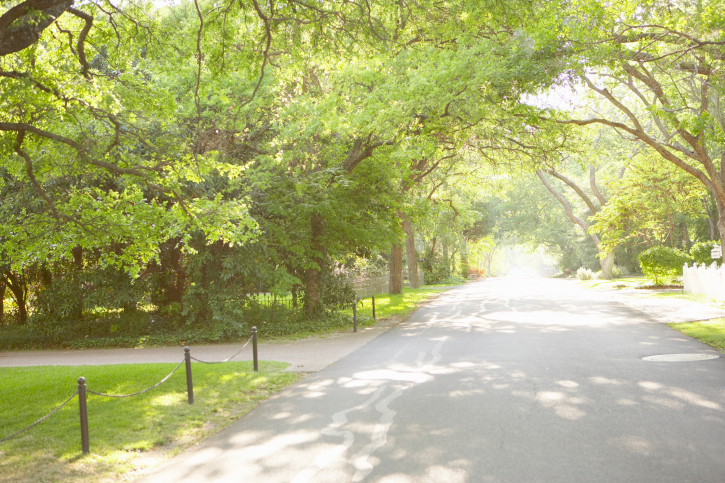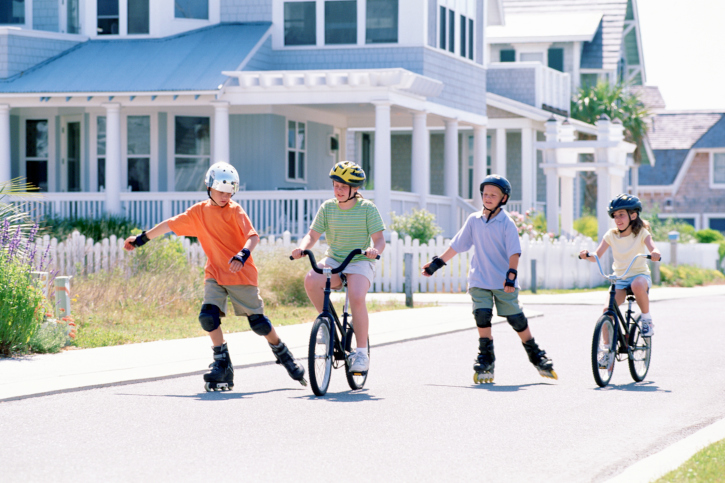You are driving to the park with your family and notice a new townhouse complex being built in your neighbourhood.
What is your first thought?
My opinion on this question changed a couple of years ago when I moved into a neighbourhood that was “building up”.
My family home growing up was on a crescent with a big yard and a small handful of neighbours.
 I played outside a lot, but it was hard to go anywhere like the park, the store or even school, without being driven by my parents. Years later, when I moved into a townhouse in a different city on my own, I felt confined by how close my neighbours were. I couldn’t understand why people thought this was an ideal way to live.
I played outside a lot, but it was hard to go anywhere like the park, the store or even school, without being driven by my parents. Years later, when I moved into a townhouse in a different city on my own, I felt confined by how close my neighbours were. I couldn’t understand why people thought this was an ideal way to live.
But then, something happened. On a Saturday morning, I walked to get my coffee. This opened up my eyes to other things that were happening in my community. Kids were playing outside on weekends and families were walking to the park every night. People were biking to work and kids were walking to school in the morning. I got to know my neighbours better and some of us jogged to a local trail for a run. Many community amenities, services and local businesses I used were close and easy to walk or bike to. I realized that I didn’t need to drive to take advantage of what my community had to offer.
Just like that, I had an “aha” moment:
The way a community is designed can influence your opportunities to take part in daily activities that support good health and happiness.
In the neighbourhood where I grew up, the crescent I lived on connected to streets without sidewalks. There were no direct links to a trail or to local stores. In my current built-up neighbourhood, parks, trails, local stores and a school are all within walking distance. Sidewalks and proper lighting help to make the active choice a safe choice too. There are more people in my new neighbourhood, which has led to more socialization, more activity and more amenities and services in the area.
When the way a community is designed makes the healthier choice the easier choice, you might get to experience similar benefits to what I did when I moved in to a built-up neighbourhood.
What is this “building up” and why is it happening?
”Building up”, or intensification, happens when an existing building, site or area in a community is developed, or redeveloped, to have more residents, services or amenities. Plans to “build up” consider things like what your neighbourhood currently looks and feels like, who lives there now, who will live there in the future, and what the residents will need to lead healthy and happy lives in the community.
Many Wellington-Dufferin-Guelph communities are required by the province to plan for and support more people living in the community. This requirement is part of Ontario’s Places to Grow program, which includes a Growth Plan for communities. This plan will give every community member more options to live, work, learn and play.
What are some of the health benefits that can result from a community “building up”?
More active living
 School, local stores and parks will be closer and more for convenient to walk to, cutting down the number of vehicles on the road. With roads being safer for walkers and cyclists, there will be more opportunities to be active outside daily. Parents will also feel at ease as their children walk, bike, rollerblade or skateboard to and from school.
School, local stores and parks will be closer and more for convenient to walk to, cutting down the number of vehicles on the road. With roads being safer for walkers and cyclists, there will be more opportunities to be active outside daily. Parents will also feel at ease as their children walk, bike, rollerblade or skateboard to and from school.
Better air quality
 Vehicle traffic causes 27% of air pollution in Canada. Built-up neighbourhoods can help cut the number of kilometers driven by community members by almost half. When more people bike to places like work, the park or the local market, there is less traffic, which can lead to cleaner air for the community and safer roads for cyclists.
Vehicle traffic causes 27% of air pollution in Canada. Built-up neighbourhoods can help cut the number of kilometers driven by community members by almost half. When more people bike to places like work, the park or the local market, there is less traffic, which can lead to cleaner air for the community and safer roads for cyclists.
More safe and social neighbourhoods

Built-up neighbourhoods have more people in them, creating more opportunities to socially interact with neighbours, whether it is through family play dates, group walks to a local store or park, or having a chance to chat over coffee with friends. And, with more people watching out for the street you live on, parents can feel more comfortable when their children go to a local park with friends.
More local investment
 When residents find it easier to walk to local stores and services, they are more likely to use them more often. In fact, people who live in built up neighbourhoods are three times more likely to walk to nearby shops or services, rather than driving to the same, or another further location. With more people in the community, there will be more opportunities for local businesses to thrive.
When residents find it easier to walk to local stores and services, they are more likely to use them more often. In fact, people who live in built up neighbourhoods are three times more likely to walk to nearby shops or services, rather than driving to the same, or another further location. With more people in the community, there will be more opportunities for local businesses to thrive.
Now, let’s revisit my initial question:
You are driving to the park with your family and notice a new townhouse complex being built in your neighbourhood. What is your first thought?
But, now consider that in a built-up neighbourhood, amenities like parks, trails and local businesses are all so close and convenient that you could walk (not drive), with your family to your destination. You might wave to, or chat with neighbours along the way, feeling more comfortable letting your kids run ahead without you. You might even stop at a local store for an ice cream cone on your way home! Imagine - a happier and healthier you.
How would you answer my question now?
